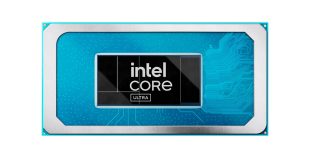DinoPC refrains from supplying resource-hogging bloatware such as virus scanners and marketing material. This is one of the cleanest installed programs pages that we have seen for a long time! Well done to DinoPC for allowing the customer to install exactly what they want to use.
Windows gives the Predator Extreme system a rating of 7.6, which, according to the index, is dragged down by its 4.7GHz Core i5 3570K processor. We'll let you decide upon the importance of this score.
When being used in an OS environment, the CPU Core Voltage is actually slightly below the BIOS-set level of 1.400V, at 1.392V.
All 16GB of the dual-channel Corsair Vengeance memory is operating at a DRAM frequency of 800.3MHz (1600MHz Double Data Rate) with timings of 10-10-10-27-1T.
The DinoPC Predator Extreme 3570K OC system's validation can be found here.
Gigabyte's ultra-fast and highly-acclaimed GTX 670 OC WindForce 3x operates at a default GPU clock frequency of 980MHz – a 65MHz increase over the reference GTX 670's speed. The card's Boost frequency is able to break the 1GHz barrier at 1059MHz – 79MHz higher than its reference counterpart. Memory speed remains unchanged over the default GTX 670 setting, with the 2048MB of GDDR5 operating at 1502MHz.
Oddly enough, the GTX 670's PCI-E link operates at only x8, rather than the usual x16. This is likely down to the motherboard's PCI-E lane-hogging controllers for USB 3.0 and eSATA ports. Thankfully, the real-world performance difference between PCI-E 3.0 x8 and x16 is non-existent.
46.6GB of storage remains untouched on the 64GB Crucial M4 SSD. This quantity is eclipsed by the 2TB Seagate Barracuda Green's 1.81TB of unused space.
DinoPC has labelled the 2TB hard drive as ‘DATA' hoping that users will store their large files on this drive. We would have preferred it if they had located the default directories such as Documents, Music, Pictures and Downloads on the larger E Data drive, rather than the small 64GB SSD. I would advise you to move the directories to the 2TB Seagate Barracuda Green HDD; otherwise you will quickly fill up C's 59.4GB of storage.
System specifications:
- Processor: Intel Core i5 3570K @ 4.7GHz using a 1.400V VCore (A retail sample is overclocked to 4.5GHz)
- Motherboard: Gigabyte Z77X-UD3H
- Memory: 16GB (2x 8GB) Corsair Vengeance DDR3 1600MHz
- Graphics Card: Gigabyte GeForce GTX 670 OC WindForce 3x
- SSD: 64GB Crucial M4 (OS)
- Hard Disk Drive: 2TB Seagate Barracuda Green (ST2000DL003)
- CPU Cooler: Corsair H100
- Case: Corsair Carbide 500R Arctic White
- Power Supply: Xigmatek Centauro 700W Modular
- Optical Drive: 22x Samsung SH-222BB DVD RW
- Operating System: Windows 7 Home Premium 64-bit
Software Suite:
- 3DMark Vantage
- 3DMark 11
- PCMark 7
- SiSoft Sandra
- SuperPI
- Cinebench 11.5 64 bit
- Unigine Heaven Benchmark
- ATTO
- CrystalDiskMark
- VLC Media Player
- Cyberlink MediaEspresso
- Battlefield 3
- Dirt 3
- Crysis 2
 KitGuru KitGuru.net – Tech News | Hardware News | Hardware Reviews | IOS | Mobile | Gaming | Graphics Cards
KitGuru KitGuru.net – Tech News | Hardware News | Hardware Reviews | IOS | Mobile | Gaming | Graphics Cards













One of my drive bays snapped too 🙁
Nice selection of components. those graphics cards are wicked. nice selection. Id still rather build one myself however, even if it cost more. Good option for the punters who dont want to build their own.
Can you ever go wrong with a Corsair H100 at the heart of a system? im shocked they set the profile to the top however, its really very loud at that setting and I wouldnt use it. the middle option is my choice. it varies but doesnt quite hit the same speeds.
I work for a competitor. All I can say if that’s the best cable management you’ve seen, you haven’t seen ours. Also we ship that particular case with a full system inside and have never had one arrive at our customers damaged in such a way.